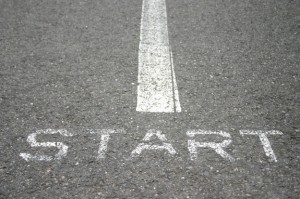Getting Started on Finances
 The first step to getting your finances in order is to simply get organized. Knowing, in detail how much money you have, where it is, how much you owe and who to, and what your expenses are goes a long way. Once all of this information is together, goals can be established to set the course moving forward. Knowing your net worth and monthly cash flow by creating a balance sheet and a budget is the starting point for all of personal finance.
The first step to getting your finances in order is to simply get organized. Knowing, in detail how much money you have, where it is, how much you owe and who to, and what your expenses are goes a long way. Once all of this information is together, goals can be established to set the course moving forward. Knowing your net worth and monthly cash flow by creating a balance sheet and a budget is the starting point for all of personal finance.
Getting a credit report: Go to Annualcreditreport.com to get a free credit report from each bureau once a year. There are three credit bureau’s, Experian, Transunion, and Equifax. Creditors usually report to all three, but sometimes one credit report will vary from the others. Although knowing your credit score is important when getting a loan, it doesn’t really matter at this stage of the game, so don’t worry about paying money to see your score. It only takes about 10 minutes of questions and answers to verify your identity to receive a report. Print all three reports and keep them on file. Outstanding commercial loans and delinquent bills will be on your report, make a spreadsheet listing smallest to largest all the debts and include the interest rate on them, then get to paying them off in that order.
Gathering Asset information: Gather together recent bank statements, mortgage statements, IRA/ 401K accounts, and look up Kelly blue book on vehicles. Add all of this together in the same spreadsheet as the debts. Total Assets – Total Debts = Net worth.
Income: This is the easiest piece of information to get for most people with regular job, simply put in your monthly paychecks, plus nay interest income or rental income. Basically any cash coming in to the household. Many people, including myself, have uneven cash flows throughout the year. For situations like this, taking a look at the previous years W2s and divide by 12 to get an average monthly income. Enter this information into a new spreadsheet, and it will go along with the expenses to make a budget.
Tracking expenses: While getting the information for assets and debts is fairly straightforward, calculating spending is more difficult. A look at the previous months bank statements gives a good overview, but taking an average over a 6 month time frame gives the clearest picture. List this information with your income. Be sure to include things like payroll taxes property taxes, and insurance. These items and others that are paid yearly or semi-annually tend to get overlooked in budgets, simply divide by 12 to get a monthly amount for these 1 time payments. Income – Expenses = cash flow.
Now that all of this information is together, action can be taken. Increasing the cash flow by decreasing expenses or increasing earnings is the first step, and then the balance sheet can be affected by using the money from cash flow to pay off debts, and then invest for the future. At this point I would start following the Dave Ramsey Baby Steps.

Leave a Reply